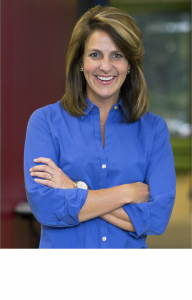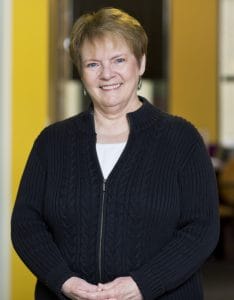
Members of the Emergenetics® North America and Asia Pacific teams had the opportunity to attend the Association of Talent Development (ATD)’s 2019 International Conference & Exposition in May. As we reflect on our experiences at ATD, here are two handfuls-worth of our aha moments.
Aha Moment #1: Don’t make your people fit your technology. Make your technology fit your people.

In Today’s Trends in Digital Learning Experiences: Understanding and Applying Them to Your Next Project, President Marie Unger experienced an aha moment when the presenter encouraged organizations to think carefully about what technologies best support the needs of their employees.
At Emergenetics, we focus on the importance of flexing to meet the Thinking and Behavioral preferences of others, and this practice extends to technology. As leaders, it’s not wise to simply purchase the latest and greatest. We need to thoughtfully approach our learning investments to ensure they truly support our team members.
Aha Moment #2: The four components of leadership.

In Seth Godin’s keynote speech, several points on the topic of leadership resonated with Terence Quek, CEO of Emergenetics APAC. He was particularly struck by the four components of leadership shared by the speaker, which were made up of:
- Enrollment: bringing others into your vision
- Tension: understanding that not all ideas will succeed
- Dignity: which is given and not taken, and
- Sowubana: Terence’s personal favorite, which is a Zulu phrase meaning “I see you.”
Aha Moment #3: Use positive psychology to make inclusion a measurement that matters.

In When Passion is Not Enough: Understanding the Science of Belonging, Inclusion and Growth, Sharon Taylor, Director, Quality, learned about the importance of using positive psychology – what we at Emergenetics call the language of grace – in inclusion measurements. Using affirmative language, even when you ask a scratchy question about the inclusiveness of an initiative, program or team, makes it feel safer to select an honest answer. If we want to accurately measure our diversity initiatives and other programs, it is important to use the language of grace in our surveys, workshops and content.
Aha Moment #4: What is the story I tell that supports my current behaviors?
In The Power of Habit, Sharon was struck by the question above. Our habits stem from stories, so to change behavior, we need to make new statements and reward ourselves in small ways to maintain our focus throughout the change process. I encourage leaders to consider how they can recognize the various Emergenetics Attributes to ensure that those who think and behave differently remain motivated to achieve their goals.
Aha Moment #5: We learn better together.

In Designing Great Courses in a Digital Age: The Formula for Online-First Education, Samantha Low, Marketing and Design Specialist, had an aha moment when she learned how belonging to a group is important to learning online.
Having a common language like Emergenetics within the team helps when providing feedback to each other, and the relationships built enhance collective learning. Learning is not only an individual activity and having support within a group boosts confidence.
Aha Moment #6: We are operating in a connection economy.

Kerry Anderson, Vice President of Client Experience, also enjoyed Seth Godin’s keynote session where he discussed our rapidly changing economy and explained that we are now operating in one that is based on soft skills and relationships.
Kerry’s takeaway: In an economy all about connection, assessments and programs like those of Emergenetics that help people understand, communicate and build relationships with one another are more essential than ever.
Aha Moment #7: We all fall into something larger than ourselves.

In the keynote speech by Eric Whitacre called Creativity and Connection, Dorothy Oh, Marketing & Analytics Specialist, had an aha moment when she saw his stunning digital choral performance that transcended boundaries in geography, class and background. It was a demonstration of how the brilliance of each individual can be harnessed to create something bigger than what one thought he or she could do individually. It was a great reminder of how we too can harness team diversity through collaboration in our day-to-day work and create something larger than ourselves.
Aha Moment #8: Are we solving for the real challenge?

Shana Bosler, Director, Coaching, was inspired in Design Thinking: An Approach to Transform Your Organization and Improve Outcomes, which encouraged attendees to ensure they are finding solutions to the right problem. In one example, hospitals in Africa were searching for a cost-effective incubator for infants. Most teams attempted to redesign existing incubators with cheaper products. When one team reframed the challenge as simply keeping babies warm, they successfully found a solution by building what was essentially a sleeping bag for infants.
In our companies, we need to make sure that we truly understand the challenge we are facing and ask the right questions to focus our resources before trying to solve the problem.
Aha Moment #9: How much of your day is devoted to bad work, good work or great work?
Shana and Kerry attended The Five Essential Coaching Questions (Yes, Just Five!) presentation and walked away with several insights from the team at Box of Crayons. One of their activities encouraged attendees to make a chart describing what portion of their jobs is made up of bad, good or great work. Bad work is the kind that wastes bandwidth. Good work includes the bullet points in your job description. Great work has more impact and more meaning.
Mapping your typical week – and having colleagues and staff do the same – can support greater employee engagement and encourage team members rethink their approach to work for the better.
Aha Moment #10: Pause is not a delay. It’s a discipline.

In The 24-Hour Rule: Leading in a Frantic World, Deborah Chew, Chief Operating Officer at Emergenetics APAC, was reminded that, while we may be used to a third-third Assertive pace, it is equally important to take a pause.
Her aha moment came when she learned that taking a pause is not a delay, but a discipline – a discipline to recover for peak performance, to ask others how they are, to give people time to be heard and to be more intentional in the work we do.
 Print This Post
Print This Post
